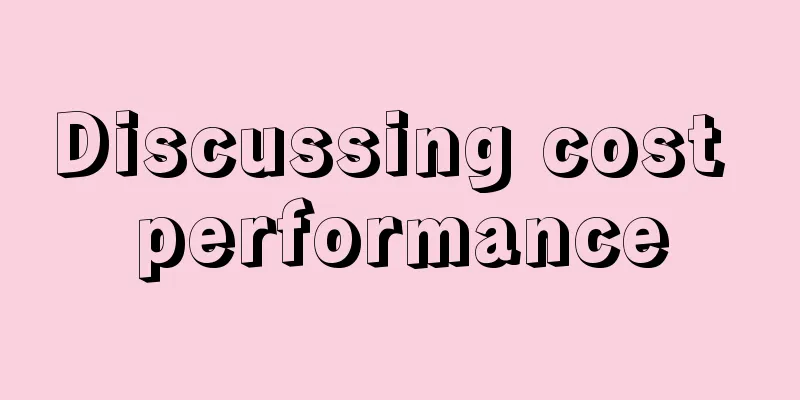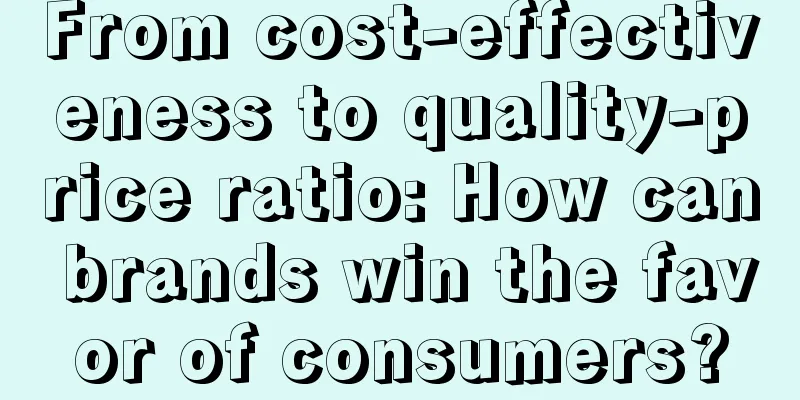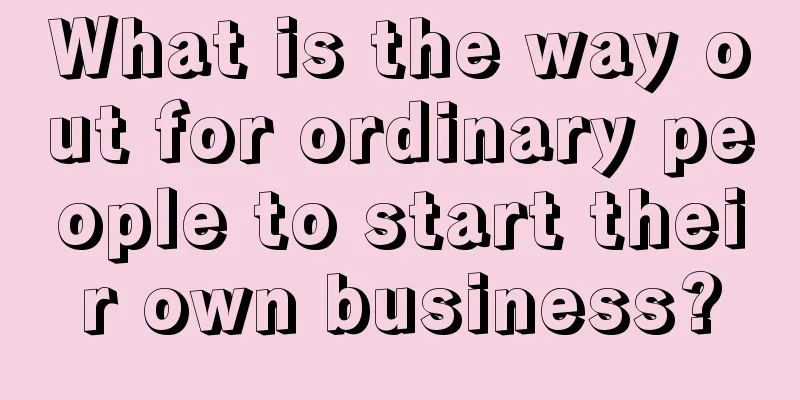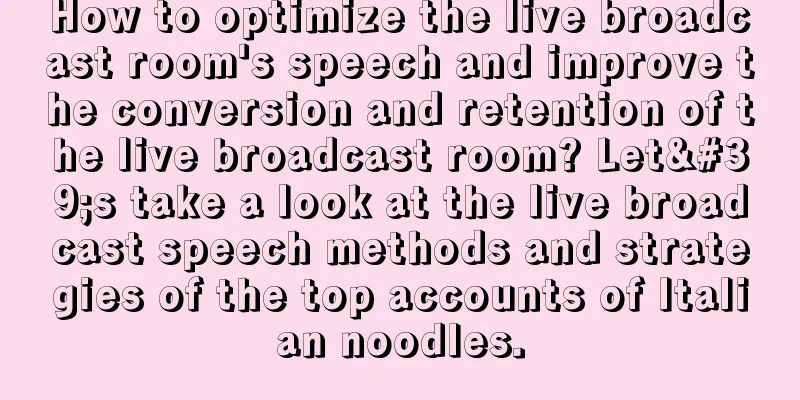Discussing cost performance

When we talk about cost performance, what are we actually talking about? Many people may have a certain deviation in their understanding of cost-effectiveness, thinking that cost-effectiveness is simply a low price. Cost-effectiveness is the ratio of performance to price. The performance here does not only refer to the functional layer of the product, but also to the value (or use value). The value includes the rational and emotional parts of the product. The higher the price-performance ratio, the greater the difference between value and price, the stronger the sense of value consumers perceive, and the more advantageous the product is. Everyone is doing the math and wants to make sure that what they buy is worthwhile. Another meaning of being able to calculate is that it is worthwhile. Everyone has a scale in their heart. That is, everyone has a "psychological account" that will psychologically classify different products and thus divide them into a psychological price range. Psychological accounting determines the evaluation criteria for product cost-effectiveness. Some seemingly irrational consumer behaviors actually stem from differences in value perception among different people. Therefore, you will find that the emergence of certain industries and the stratification and combination of value and price in these industries reflect a business phenomenon, that is, the price-performance ratio is refined, thereby stratifying the target population and generating market segments. 1. Definition of cost performanceCost performance is the ratio of performance to price, not simply low price. The formula is: cost performance = performance / price, that is, how much the performance exceeds the price. Performance is value, and value is divided into product function layer and emotional psychological layer. The cost-effectiveness needs a reference, that is, it needs to be quantitative, otherwise there is no point in comparison. For example, the price is the same, the performance is stronger, and the performance is the same, the price is lower, it is competitive. In other words, this ratio should be increased, which is actually the difference between performance and price. 2. Classification of cost performance Cost performance is not absolute, it is a comprehensive reference indicatorThere is a unified standard for price, but the factors that affect value are complex and difficult to quantify. However, this concept can provide a certain direction for product strategy. For example, we can compare with competing products horizontally, classify and sort the product selling points according to the target population, and then score them one by one, and finally calculate the total score. Regarding the classification of cost performance, we can use a matrix diagram to look at it, with the horizontal axis being price and the vertical axis being value. Depending on whether the value is higher than the price, it can be divided into three parts. The yellow part in the middle is the logic of being at the critical value when the two are equal, which is equivalent to a passing score. Above the yellow part are blue and purple. The purple part is where the value exceeds the price by a large margin. It is very rare to achieve this, or it is difficult to achieve sustainably. When we say that prices fluctuate around value, on the one hand, we are measuring the user level, but we also look at the business logic, because companies also need to consider costs to be truly commercial and sustainable. Even if this happens, it is only a strategic loss, which will occupy resources in the process of loss and then build its own barriers. Most of the companies are mainly in the blue part, where the value is slightly higher than the price, which not only meets the expectations of the target group but also achieves sustainability in terms of cost. Even ultra-high-end products are no exception, and their value must exceed user expectations. Of course, the value here is more about identity and emotion. The red part below the yellow indicates a situation where the value is lower than the price, which is a “deceptive” positioning, meaning that the value is lower than the price. Of course, this is a common situation. If there is a monopoly, it will also exist because it is a supply market. Under full competition, it will be difficult to last long because it is difficult to be sustainable. 3. Cost-effectiveness is the user’s logicThe context of the term "value for money" is aimed at consumers, while the value for money that enterprises talk about is based on the logic of cost and price. For consumers, it doesn’t matter how much your cost is; what matters is getting value. When a product has a sense of value, the cost is just an occasional psychological joke. When the value is not enough, the cost becomes a backlash of negative news. When talking about cost performance, we have to mention the way of product pricing. One of the most common methods is cost & profit pricing. That is, how much cost the enterprise needs and how much profit it wants to get, this is the logic of the enterprise. Measuring cost-effectiveness is consumer logic. Whether it is cheap or expensive depends on what consumers think. And what consumers think depends on what they feel in the product and who they compare it with, which can be a peer or a substitute outside the industry. High cost performance does not mean low profits for the company, nor does it mean the ratio of cost to price, but rather that the price is lower than the user's use value. If you have the same functions but are cheaper, or have similar functions but the price is much different, then you have an advantage. IV. ConclusionThe price law of the capital market is that prices fluctuate around value, prices are determined by value and are affected by supply and demand. When value is lower than price, it is a seller's market, and when value is higher than price, it is a buyer's market. A seller's market requires prerequisites, such as monopoly, and a buyer's market is the norm, which is what we often call long-termism, that is, based on consumer value. Pseudo consumption upgrade means that the price has gone up, but the value has not. It raises the expectations of consumers’ wallets, while also lowering the value of the product. Author: Zang Feng, Source: WeChat public account "Strategist Zang Feng" |
>>: "Dopamine dressing" is popular, and the consumer market needs simple happiness
Recommend
What is multidimensional data analysis? How to do it?
This article deeply analyzes the concept and pract...
What does Amazon’s entry fee include? Introduction to Amazon’s entry fee
Amazon's cross-border e-commerce platform can ...
What are the conditions and fees for joining Shopee e-commerce? How to join?
Shopee is also one of the cross-border e-commerce ...
How to get started as a newbie at Lazada? Lazada operation ideas for newbies
Lazada is a newly emerging e-commerce platform in ...
DHgate.com launches new store membership system
Enabling every customer to place one more order is...
New trend in single economy!
The consumption trend of the consumer market is in...
WeChat Stores use “3 moves + 5 paths” to connect all regions
"The trend of omni-channel marketing is gaini...
How much does it cost to start a cross-border e-commerce business? Which platform is better?
Now many friends want to do cross-border e-commerc...
What are the Lazada tiers for? What are the tiers?
On the Lazada platform, sellers and buyers have a ...
NIO biscuits are sold out. What lessons can we learn from this for car marketing?
In the automotive industry, traditional marketing ...
What is the limit of a one-time credit card? How to increase the limit of a one-time credit card?
Credit cards, as a convenient payment tool, have p...
Are skits going crazy? The old Mary Sue is becoming popular
This article introduces the emerging trend of shor...
What does a one-time credit card mean? How do I apply for a one-time credit card?
With the rapid development of financial technology...
The era of short drama 2.0: gold rush, big changes, new trends
In 2024, short short dramas ushered in the booming...
How can user operations accurately issue coupons by building an uplift model?
Issuing coupons is a precision marketing process. ...









